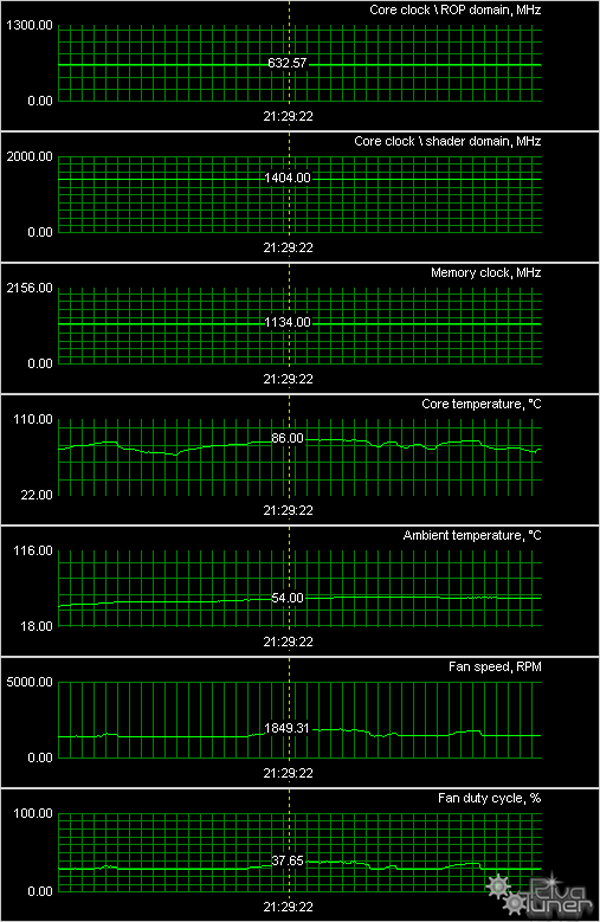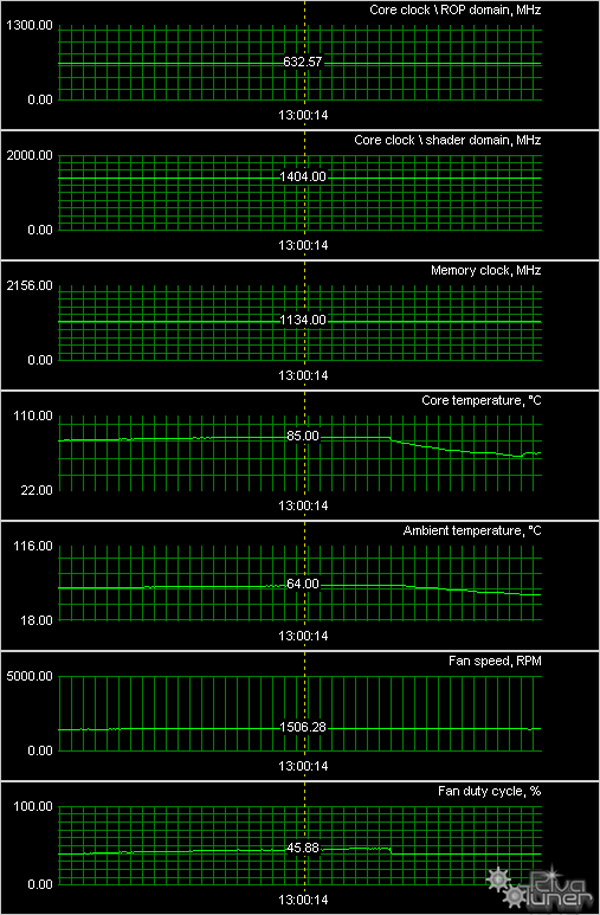NVIDIA GeForce GTX 275 896MB
|
Cooling
As two cards have the same cooler, we'll examine the one on the reference card. The Palit card has a special cooler that will be examined separately.
| NVIDIA GeForce GTX 275 896MB (reference) |
The cooling system does not principally differ from what we saw in GeForce 8800 GTS 512. It's actually the same cooler as in GTX 260/280 Dimensions of the heatsink and the card itself are practically the same.
It's a turbine-type cooler that drives the air through the heatsink inside a long plastic housing. The hot air is ejected out of a PC enclosure, so the card with this cooling system takes up two slots. |
 |
 |
| Palit GeForce GTX 275 896MB |
This device is principally different. Memory chips and the GPU are cooled by different heatsinks ventilated from the same source: two fans on the plastic housing above the heatsinks.
The GPU heatsink uses heat pipes and copper alloys in its base. And the heatsink on NVIO and memory chips has a simpler design.
This cooler has its pros and cons. The problem is that unlike the reference cooler, this one does not eject the hot air out of a PC enclosure. So temperature inside a PC enclosure can grow due to the hot air from the graphics card. And its advantage is in almost noiseless operation, as its fans rotate at a low speed. However, it's only relatively noiseless, some users may find this whirring unacceptable. |
 |
 |

The die was manufactured on week 52, 2008 or in the very end of 2008. Not surprising, considering that it does not differ from the GTX 285 as far as the core is concerned.
We monitored temperatures using RivaTuner. As all these cards are just copies of the reference design and they operate at the same frequencies, we'll publish common results.
Palit GeForce GTX 275 896MB
NVIDIA GeForce GTX 275 896MB (reference)
BFG GeForce GTX 275 OC 896MB
Zotac GeForce GTX 275 AMP! Edition 896MB
As we can see, temperature grows proportionally to operating frequencies of the card. The maximum level is 93°C, which is a borderline case. It's not a problem for the card itself, as it can endure temperatures above 100°C, but it can be critical for the entire system unit.
The reference cooler should be more efficient. This also applies to the Palit card.
Write a comment below. No registration needed!
|
|
 |
|
|
|




